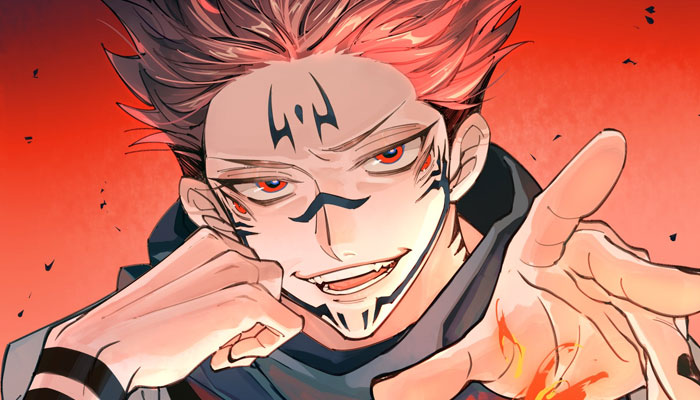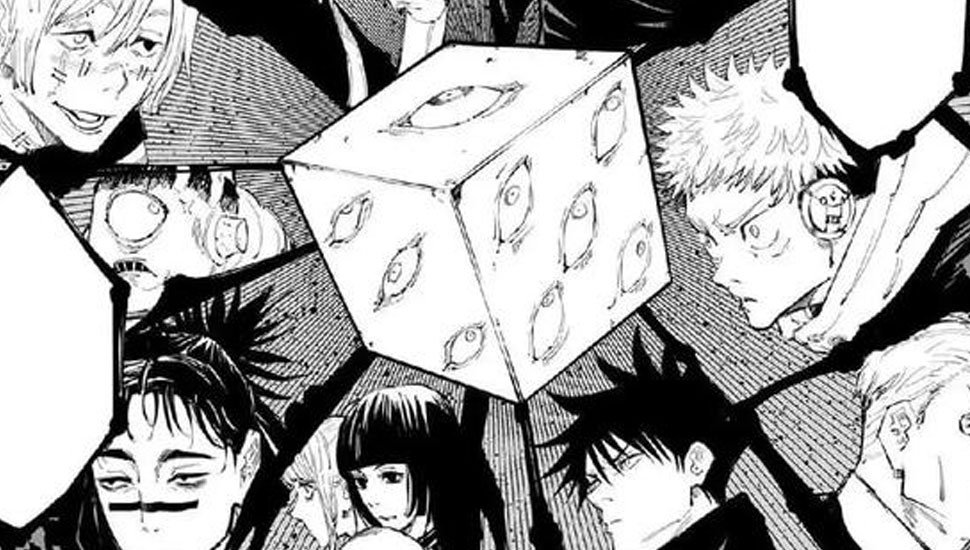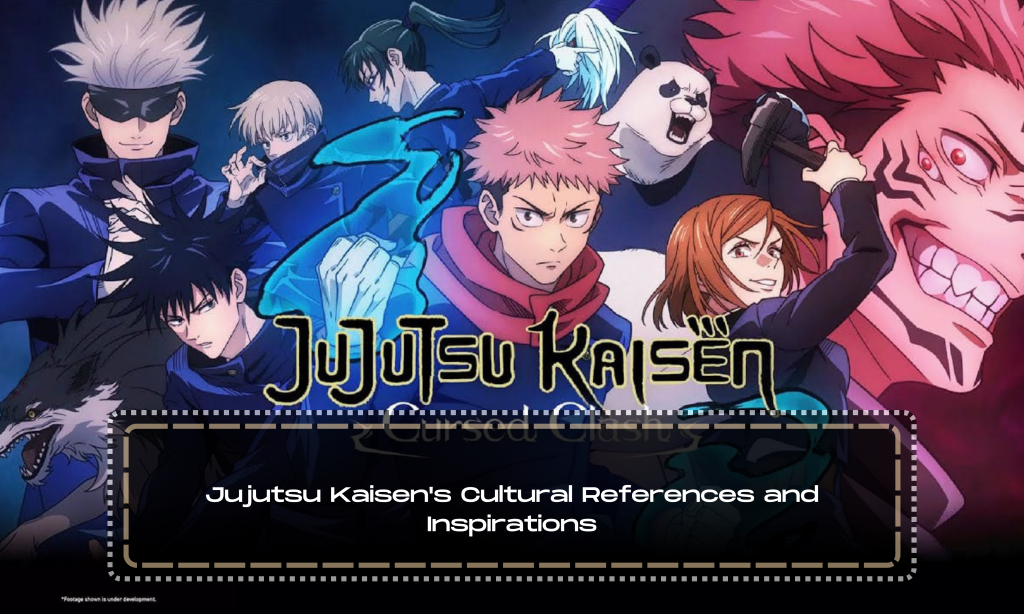Jujutsu Kaisen’s Cultural References and Inspirations
Oh, hello there, fellow anime enthusiasts! Today, we’re diving headfirst into the supernatural world of “Jujutsu Kaisen” – a show that’s been making waves not just for its epic battles and engaging storyline but also for its unique cultural references and inspirations. So, sit back, relax, and get ready for a rollercoaster ride through the intriguing world of this anime that blends traditional folklore with modern sensibilities.
Understanding the Jujutsu World

Before we embark on our cultural journey, let’s take a moment to grasp the essence of “Jujutsu Kaisen.” The story revolves around Yuji Itadori, a high school student who unwittingly becomes entangled in a world of curses, spirits, and sorcery after a cursed object is unleashed upon his life. To save himself and his friends, he joins a secret organization of jujutsu sorcerers, dedicating his life to vanquishing curses and maintaining the balance between the spirit world and the human realm.
Shinto and Buddhism
One of the most prominent cultural influences in “Jujutsu Kaisen” is the seamless blend of Shinto and Buddhist traditions. These two belief systems are deeply ingrained in Japanese culture, and the anime doesn’t shy away from showcasing their importance.
Shintoism, Japan’s native religion, venerates spirits or kami, which can inhabit various objects and locations. “Jujutsu Kaisen” incorporates this belief through the concept of curses, where negative energy and emotions give rise to malevolent spirits. The idea that curses can inhabit everyday objects is a nod to Shinto beliefs, where seemingly mundane items can be spiritually significant.
On the other hand, Buddhism is a prevalent theme in the anime as well. Sorcerers in the series often use Buddhist symbols and rituals to combat curses. This fusion of spiritual practices adds depth and complexity to the story, making it more authentic and immersive.
The Kyoto Jujutsu High and Cultural Integration
The Kyoto Jujutsu High is a significant institution in the anime and serves as a melting pot of cultural diversity. Students from all over Japan gather here to learn and master jujutsu techniques. The unique aspect of this school is that it encourages students to maintain their regional traditions, bringing in a diverse array of customs, clothing, and rituals. The way “Jujutsu Kaisen” incorporates these regional differences and harmonizes them within the school’s framework is a testament to the show’s commitment to cultural authenticity.
Kyoto: A City of Rich Tradition
As the name suggests, the city of Kyoto plays a pivotal role in the anime. Kyoto is Japan’s cultural heart, renowned for its rich history and preservation of traditional Japanese customs. The city’s ancient temples, shrines, and picturesque landscapes set the stage for several crucial battles in the series.
Kyoto’s historical significance extends to the characters as well. Characters like Maki Zenin and Toge Inumaki hail from families that have a deep-rooted connection to Kyoto’s spiritual traditions. Their knowledge and abilities are tied to the city’s cultural heritage, adding another layer of depth to the anime’s world-building.
The Zenin Clan and Onmyodo
The Zenin clan, one of the major sorcerer families in the anime, draws inspiration from the traditional Japanese practice of Onmyodo. Onmyodo is a combination of esoteric cosmology, Taoism, and Japanese folklore. In “Jujutsu Kaisen,” the Zenin family’s use of Onmyodo is a compelling representation of how ancient practices continue to influence contemporary society.
Onmyodo is known for its use of the yin and yang principles to maintain balance and harmony in the world. Similarly, the Zenin clan seeks to restore equilibrium by eliminating curses and maintaining order. This connection highlights how cultural traditions can persist through time and manifest in various forms.
Sukuna Ryoumen and the King of Curses

The character of Sukuna Ryoumen, the infamous King of Curses, is a masterful amalgamation of historical legends and folklore. Sukuna’s 1,000 years of existence and the 20 indestructible fingers he left behind pay homage to the concept of onryo, vengeful spirits seeking retribution for a grievous wrongdoing.
Moreover, Sukuna’s design, with his multiple arms and grotesque visage, draws inspiration from traditional depictions of demons and fearsome creatures in Japanese art and folklore. His portrayal showcases how “Jujutsu Kaisen” brilliantly incorporates ancient legends into its narrative.
Gege Akutami’s Inspirations
It’s not just the rich cultural tapestry of Japan that influences “Jujutsu Kaisen.” The series’ creator, Gege Akutami, has drawn inspiration from various sources, creating a unique blend of old and new. Akutami’s fascination with the occult, supernatural, and horror genres has undeniably shaped the anime’s narrative.
Akutami’s own journey into the world of the supernatural, including ghost stories and urban legends, has profoundly influenced the development of the curses and the jujutsu world in the series. This personal touch adds an authentic layer to the story and reveals the interconnectedness of culture and individual experiences.
The Modern and the Ancient
“Jujutsu Kaisen” excels in harmonizing ancient traditions with contemporary storytelling. The show’s ability to seamlessly weave cultural references into its narrative not only enriches the viewing experience but also deepens our appreciation for the complexities of Japanese culture.
In the midst of epic battles, intense emotions, and captivating characters, the anime’s cultural depth sets it apart from many others in the genre. It pays homage to the traditions of Japan while also embracing the modern world, making it an enticing blend of past and present.
Conclusion

“Jujutsu Kaisen” is more than just a supernatural battle anime; it’s a captivating exploration of Japanese culture and tradition. By delving into the world of curses, sorcery, and spiritual beliefs, the series manages to create a narrative that’s not only entertaining but also enlightening. Through its cultural references and inspirations, it bridges the gap between ancient customs and contemporary storytelling, delivering an experience that’s both thought-provoking and visually stunning.
So, the next time you dive into the world of “Jujutsu Kaisen,” take a moment to appreciate the layers of cultural authenticity that make it a true masterpiece. It’s a celebration of Japan’s rich heritage, where the past and present coexist in a mesmerizing fusion of sorcery and spirit.
That’s me, Andreea Blaga, author of the blog anime-everything.com. I work as a content creator in the US. I am also passionate about Japanese Anime.


Related post
Character Study: Korra and Aang’s Legacy
In the richly woven tapestry of the “Avatar” universe, the characters of Korra and Aang...
Jul
Islands of Wonder: Exploring the Unique Geography of One Piece
Enter the vibrant world of One Piece, a beloved manga and anime series created by...
Jul
Unveiling ‘The Eminence in Shadow’: A Dive into its Intriguing Premise
“The Eminence in Shadow” is a light novel series written by Daisuke Aizawa and illustrated...
Jul
Dragon Ball Z: A Cultural Phenomenon Through the Ages
Since its debut in 1989, “Dragon Ball Z” has become a cultural phenomenon that transcends...
Jul
Unleashing the Chainsaw: A Deep Dive into Chainsaw Man’s Gripping Plot
In the realm of dark fantasy manga, few series have captivated readers quite like Tatsuki...
Jul
Aang’s Journey: From Reluctant Hero to Avatar of Peace
In the world of animated series, few have captured the hearts and minds of viewers...
Jul